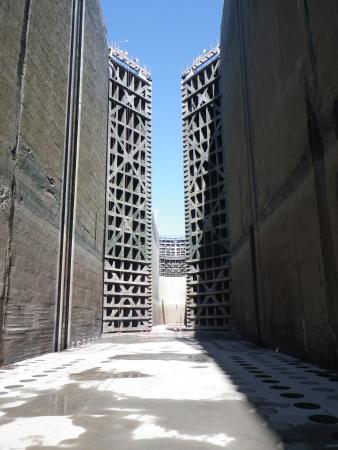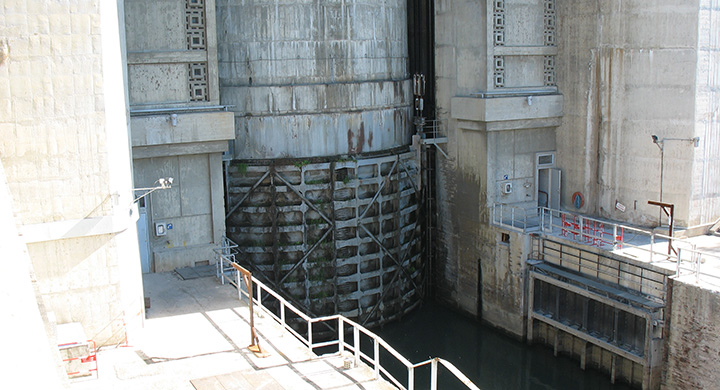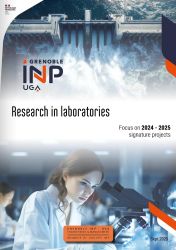Ageing hydraulic structures in France and around the world are leading operators to choose between various strategies to extend their service life: do nothing at all, repair the structure, reinforce it, or replace it entirely. Since manufacturing costs and losses due to downtime during work are very high, it is crucial to be able to assess the required interventions as accurately as possible, to find the best compromise ensuring optimal safety and avoiding unnecessary expenditure.
The new Fondation Grenoble INP chair, recently created with SPRETEC-ARTELIA and the 3SR and SIMaP laboratories, seeks to refine models for predicting the remaining life of civil engineering structures. SPRETEC specialises in design and structural control studies for “lock structures”, that is, high-stakes structures such as lock gates, sluices or other parts of hydraulic power plants. Most of the time, these are old structures where wet parts are subject to strong buoyancy forces and eventually lose strength and show significant signs of fatigue.
At present, studies of these structures must comply with the rules and criteria set for common buildings. “These regulations are perfect for designing structures, but are not suitable for built structures that are not new and are now ageing, which are subject to fatigue, meaning repeated load cycles.” This is the case for the Bollène lock, which led SPRETEC to reach out to the laboratories at Grenoble INP – UGA.
 Towards more sophisticated indicators for decision-making
Towards more sophisticated indicators for decision-making
At this time, most of the ageing models used by SPRETEC comply with current regulations that are based on deterministic criteria. “In accordance with the regulations in force, the models used allow us, for example, to check every part of the structure to ensure that the material’s strength is greater than its load, but without clearly taking into account the variability of the materials and the loads, possible defects or other ageing effects present in the structure,” said Julien Baroth. In order to help operators estimate the remaining service life of structures and make the most informed decisions possible about their maintenance, models that go beyond the regulatory calculations can be developed.
As such, Grenoble-based researchers have proposed combining deterministic models with what are referred to as probabilistic models, which take into account possible defects. This involves compiling different measurements and visual observation data in order to determine a risk index for each weld, which can then be integrated into new modelling. “SPRETEC called on us, since we have advanced computational methods and access to descriptive data and feedback in the scientific literature, which is scarce and invaluable for civil engineering structures,” explains Rafael Estevez. We’ll be helping SPRETEC engineers, for example, by seeking out data and test results from laboratories around the world, and using probabilistic methods based not on fixed values, but on average standard deviation values, or distributions, estimated on the basis of other research,” added Rafael Estevez.
The collaboration will last four years and will include second-year engineering internships, final internships and a PhD.
*CNRS, Grenoble INP – UGA, UGA
**CNRS, Grenoble INP – UGA, UGA




 Towards more sophisticated indicators for decision-making
Towards more sophisticated indicators for decision-making